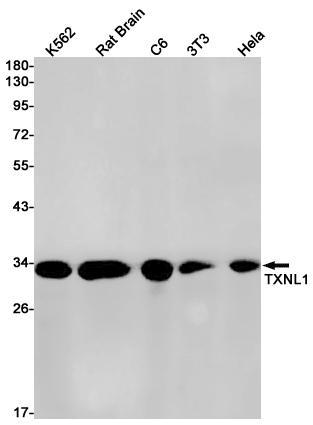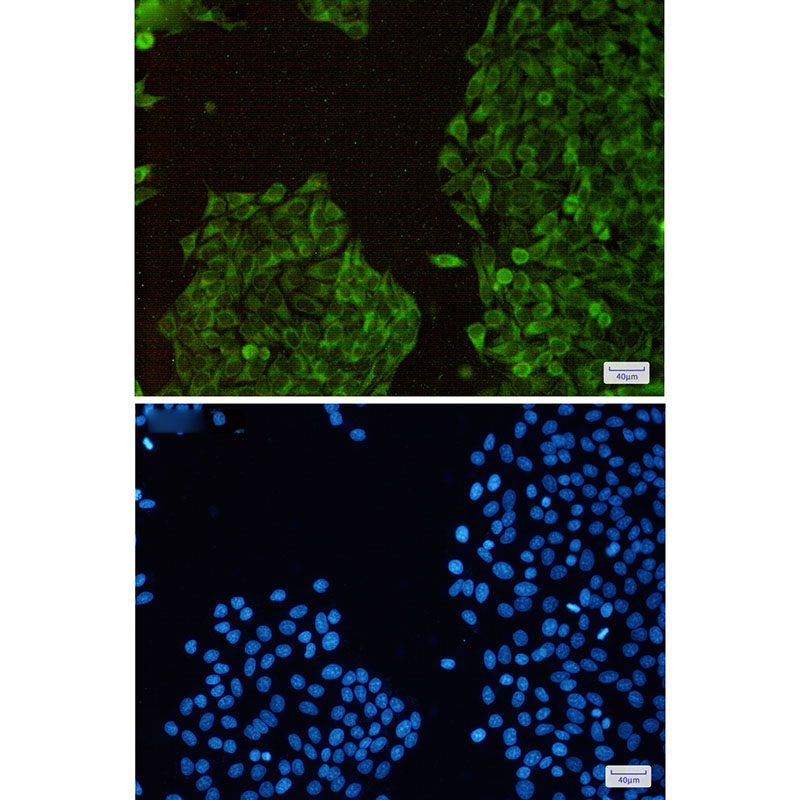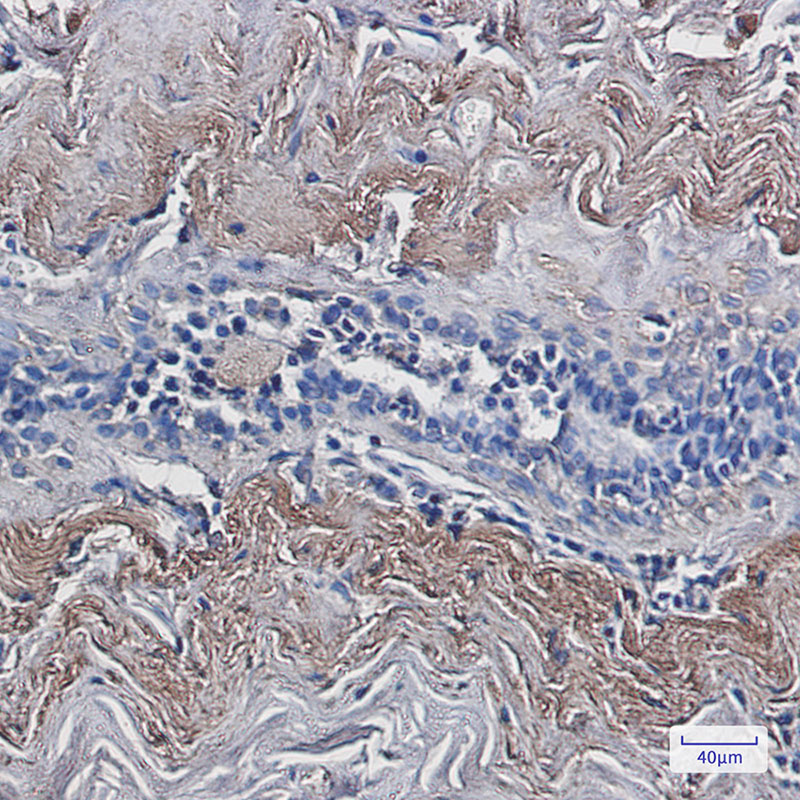


| WB | 1/500-1/1000 | Human,Mouse,Rat |
| IF | 咨询技术 | Human,Mouse,Rat |
| IHC | 1/50-1/100 | Human,Mouse,Rat |
| ICC | 1/50-1/200 | Human,Mouse,Rat |
| FCM | 咨询技术 | Human,Mouse,Rat |
| Elisa | 咨询技术 | Human,Mouse,Rat |
| Aliases | Txl; TXNL; TRP32; TXL-1; HEL-S-114 |
| Entrez GeneID | 9352 |
| WB Predicted band size | Calculated MW: 32 kDa; Observed MW: 32 kDa |
| Host/Isotype | Rabbit IgG |
| Antibody Type | Primary antibody |
| Storage | Store at 4°C short term. Aliquot and store at -20°C long term. Avoid freeze/thaw cycles. |
| Species Reactivity | Human,Mouse,Rat |
| Immunogen | A synthetic peptide of human TXNL1 |
| Formulation | Purified antibody in TBS with 0.05% sodium azide,0.05%BSA and 50% glycerol. |
+ +
以下是关于Thioredoxin Like Protein 1(TXNL1)抗体的参考文献示例(仅供参考,实际文献需通过学术数据库检索确认):
---
1. **标题**:*Thioredoxin-like protein 1 regulates oxidative stress and apoptosis in cancer cells*
**作者**:Zhang Y et al.
**摘要**:研究利用TXNL1特异性抗体,通过免疫印迹和免疫荧光技术,揭示了TXNL1在肺癌细胞中通过调控氧化应激通路抑制凋亡的机制,表明其作为潜在治疗靶点。
2. **标题**:*TXNL1 interacts with ASK1 and modulates its activity in neurodegenerative disease models*
**作者**:Lee S et al.
**摘要**:通过免疫共沉淀(Co-IP)和抗体阻断实验,证实TXNL1与凋亡信号激酶ASK1的相互作用,提示其在阿尔茨海默病中通过抗氧化途径减缓神经元损伤。
3. **标题**:*Development of a monoclonal antibody against human TXNL1 for diagnostic applications*
**作者**:Wang H et al.
**摘要**:报道了一种高特异性抗TXNL1单克隆抗体的制备与验证,该抗体成功应用于结直肠癌组织芯片的免疫组化检测,显示TXNL1表达与患者预后相关。
4. **标题**:*Structural insights into TXNL1 function via antibody-mediated epitope mapping*
**作者**:Johnson R et al.
**摘要**:通过抗体表位定位和晶体学分析,揭示了TXNL1的活性位点结构,阐明其硫氧还蛋白功能域的催化机制,为设计靶向抑制剂提供依据。
---
**注意**:以上为示例性内容,实际文献需通过PubMed、Google Scholar等平台以关键词“TXNL1 antibody”或“Thioredoxin Like 1 antibody”检索。建议结合研究方向筛选近年高影响力论文。
**Background of Thioredoxin-Like Protein 1 (TXNL1) Antibody**
Thioredoxin-like protein 1 (TXNL1), also known as thioredoxin-related protein 32 kDa (TRP32), is a member of the thioredoxin (Trx) family, characterized by a conserved CXXC redox-active motif. Thioredoxins are small redox enzymes involved in regulating cellular redox homeostasis, protein folding, and apoptosis. TXNL1 shares structural and functional similarities with thioredoxin but exhibits distinct substrate specificity and localization. It is primarily localized in the cytoplasm and nucleus, where it participates in redox signaling, antioxidant defense, and DNA repair mechanisms.
The TXNL1 antibody is a critical tool for studying the expression, localization, and function of TXNL1 in various biological contexts. It enables the detection of TXNL1 in techniques such as Western blotting, immunohistochemistry (IHC), and immunofluorescence (IF). Research highlights its role in diseases like cancer, where TXNL1 may influence tumor progression by modulating oxidative stress responses and cellular proliferation pathways. Additionally, studies link TXNL1 to neurodegenerative disorders and aging, emphasizing its importance in maintaining cellular redox balance.
Commercial TXNL1 antibodies are typically raised in hosts like rabbits or mice, targeting specific epitopes of human TXNL1. Validation includes reactivity assays and knockdown/knockout controls to ensure specificity. This antibody serves as a valuable resource for exploring redox biology, disease mechanisms, and potential therapeutic targets.
×